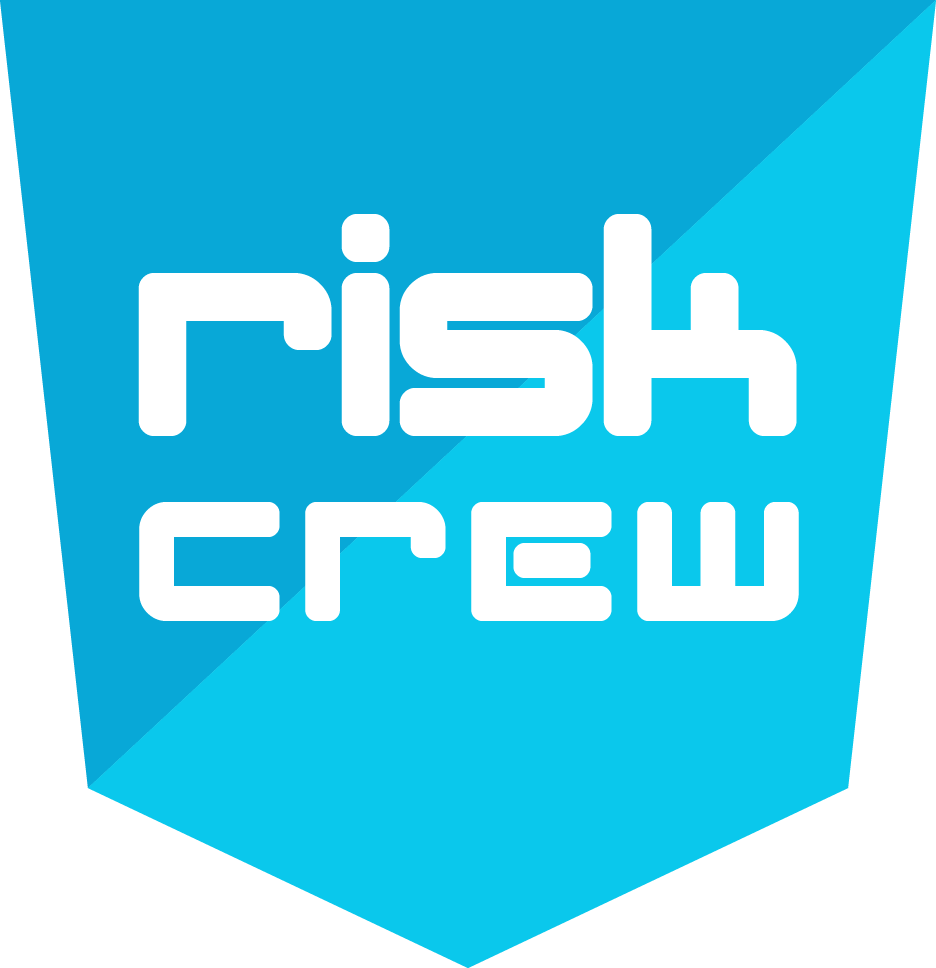When looking to embark on achieving ISO 27001 Compliance, every organisation should know what challenges are ahead, in order to overcome them. It doesn’t have to be that hard if you know the hurdles.
Risk Crew would like to share some tips to jump the hurdles when it comes to building your Information Security Management System (ISMS) to attain ISO 27001 Certification. We’ll start with the most essential component that underlines your entire journey.
Leadership Commitment is Essential
Hurdle one is to get buy-in from senior leadership. Always lead from the top. Leadership commitment is essential to change the culture of the business to one that is information security based. This is the most important step you can take to ensure a smooth implementation and ongoing support of your ISMS. Without this, you will not be able to make the management decisions needed to run an organisation whilst securing the information that it holds.
Leadership must show their commitment by ensuring policies and objectives are compatible with the business’s strategic goals and promote a risk-based approach. Auditors will look for evidence that senior leadership has a proactive and ‘hands-on’ approach to the management of the ISMS.
ISO 27001 Policies Must Be Clearly Defined
Your next hurdle covers information security policies, as this will be one of your main tasks to create and maintain. ISO 27001 policies are the foundation of your ISMS and the baseline for achieving ISO 27001 certification. Policies must provide the statement applicability, roles, processes and controls.
Policies will state what the organisation is committed to doing – to achieve a secure environment for the information that it processes, stores and transmits. Roles and responsibilities for information management should be clearly defined and processes that the organisation will follow to achieve the control – in order to ensure the security if it contains information.
Policies must be shared with staff to let them know what is expected of them. The auditor will approach staff members and ask questions during the audit to ensure policies have been communicated.
ISO 27001 Asset Management is Time Consuming
If you do not label and classify the information that you process, store and transmit, and have an assigned information owner – then you will not be able to establish what information you have, where that information is or how to protect that information. The ISO 27001 asset management policy safeguards that the correct assets are identified and protected.
At first glance, this may seem like it’s a simple task. You just need to identify and inventory the devices Right? Well, no. Most small organisations struggle with knowing what they have – as your asset management policy will include every device that can store, process and transmit data. The obvious devices are laptops, mobiles, and tablets but you also need to look at items such as routers and switches. Don’t forget you’ll also need to include staff’s personal devices if they use them to access our systems and our data.
You will need to foresee this hurdle ahead as it is one of the most important and will require some extra time to complete.
High Stakes Make Risk Management Crucial
This will be one of your highest hurdles to jump as the stakes are high, and the process can be complex. A good ISO 27001 management structure that is risk-based is a must to ensure the appropriate controls are in place to reduce or eliminate the likelihood of an incident or breach.
Developing an effective information security risk assessment plan is crucial. The risk assessment will help an organisation identify, evaluate, and treat risks that could affect its information security processes. It’s an essential part of the ISO 27001 certification as it provides the organisation with an understanding of the specific scenarios in which their data could be compromised, helps to evaluate risks, and determines the damage resulting from breaches in each scenario. Additionally, it establishes the impact and likelihood of threats.
Data Leakage Control is Difficult
Data leakage can roughly be described as any information that is accessible, transferable, or extractable by unauthorised internal and external staff, systems or malicious threat actors. It tends to be a common problem for organisations that handle large amounts of data with different classifications, across multiple unconnected and linked ICT systems, applications and file servers.
We have included this as a hurdle because data leakage is difficult to eliminate entirely. But what you can do is ensure you have strong controls in place to stop data leakage in your organisation. Whether it’s endpoint security as a technical fix or a mix of technical and policy controls – having a data leakage control in place ensures you are protected inside and outside the organisation.
Access Control Should Be Well Thought Out
Providing privileged, role or group-based access is key to restricting access to the organisation’s information so that information is only viewed on a “need to know basis”. With data, access, and networks continually expanding, organisations have an ever-increasing need to manage identities and access.
The optimum solution for this function may be a well-thought-out and organisation-wide Access Control Management programme to ensure only the right people – can access the right services – at the right time. Within a complex organisation, establishing a programme could become a hurdle as it is not an easy activity. Stakeholders, technology areas, policies and processes must be aligned for a scalable and robust programme. Additionally, governance has a key role in the success of the implementation and management.
Align Password Management With the Security Level
Password management seems like an easy enough task. You just need to enforce users to change their passwords every 30-60 days, right? Well no. One would assume this is the best way to stop threat actors from gaining access to passwords. However, by forcing users to change their passwords regularly, you may very well be increasing the probability of poorly constructed and weak passwords being used.
To overcome this hurdle, consider systems that provide single sign-on, the fewer passwords you must remember the more passwords are likely to be secure. Using multi-factor authentication, including the use of biometrics can reduce users’ reliance on passwords. The ideal authentication factors will depend upon the results of your risk assessments, the chosen security level, implementation costs and available resources.
Ensure Incident Management is Understood
Surely, you have heard the saying “If you fail to plan, you plan to fail.” This could not be truer when it comes to incident management.
Having incident management in place ensures that organisations understand what an incident is and how to respond. Ensure your incident management is centrally managed to stop the ‘Silo effect hurdle’ that can happen between departments when incidents happen.
Remember that if an employee does not know what an incident is, they will not report it. It’s vital that you educate employees on not only identifying but on what the process and procedures are when reporting an incident.
Business Continuity Does Not Have to be Tedious
One of the last steps in implementing your ISO 27001 ISMS, will be to create a business continuity plan. The most common obstacles to a business continuity programme are with lack of resources, leadership support, organisational engagement and the insufficiency of technology and tools available.
To make a programme successful, you should implement ongoing monitoring and continual training of staff. Keeping track of new and emerging threats can be a gruelling task. With Many organisations struggle to have the time to learn about the latest threats.
A good way to jump over this hurdle is to seek external help. There are integrated business continuity solutions that can eliminate much of the complexity – freeing up your time to be productive in other areas. Additionally, these solutions can help with everything from process, planning to testing.
Compliance is Ongoing
Once you have been certified to ISO 27001, it may seem that your work is done. You have jumped all the hurdles and won the race. But take a breath because you are not entirely done. It’s time to evaluate and manage the ISMS to receive your real return on investment – which is securing your information assets.
You should keep your risk treatment plan up to date – and keep it healthy. Conduct continual staff awareness training to build the cyber secure culture that your leadership first set out to support when they bought in. Additionally, streamlining your incident management and change control processes will help protect your information security assets.
We also recommend benchmarking your organisation against industry standards for information security and providing your management with accountable reporting.
Ready to Take the Next Step?
If that’s a yes, then we suggest you start with a Gap Analysis to identify areas of your information security that need improvement. Then a roadmap and implementation plan can be created to provide you with the most cost-effective service solution for compliance.
Risk Crew offers four services that can be bespoke to your needs. You get the exact amount of assistance you need. Nothing more, nothing less. Learn more about Risk Crew ISO 27001 Compliance Services.
Additional ISO 27001 Resources
ISO 27001 Documentation Guide & Checklist
Learn what documentation and policies are required to achieve certification to the standard.
ISO 27001 Service
Overview Brochure
Find out how Risk Crew can help you achieve compliance. Choose from 4 services to meet your needs.
ISO 27001 Case Study
Read how Risk Crew helped an Agri-food organisation achieve and maintain ISO 27001 certification.

